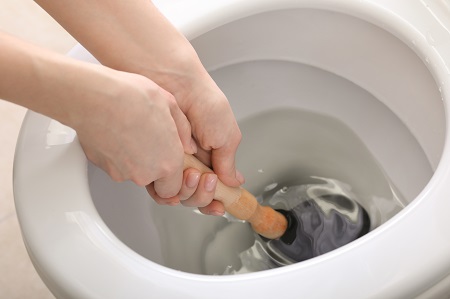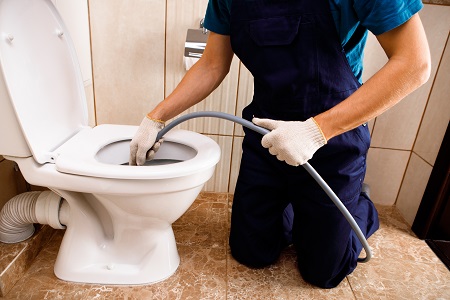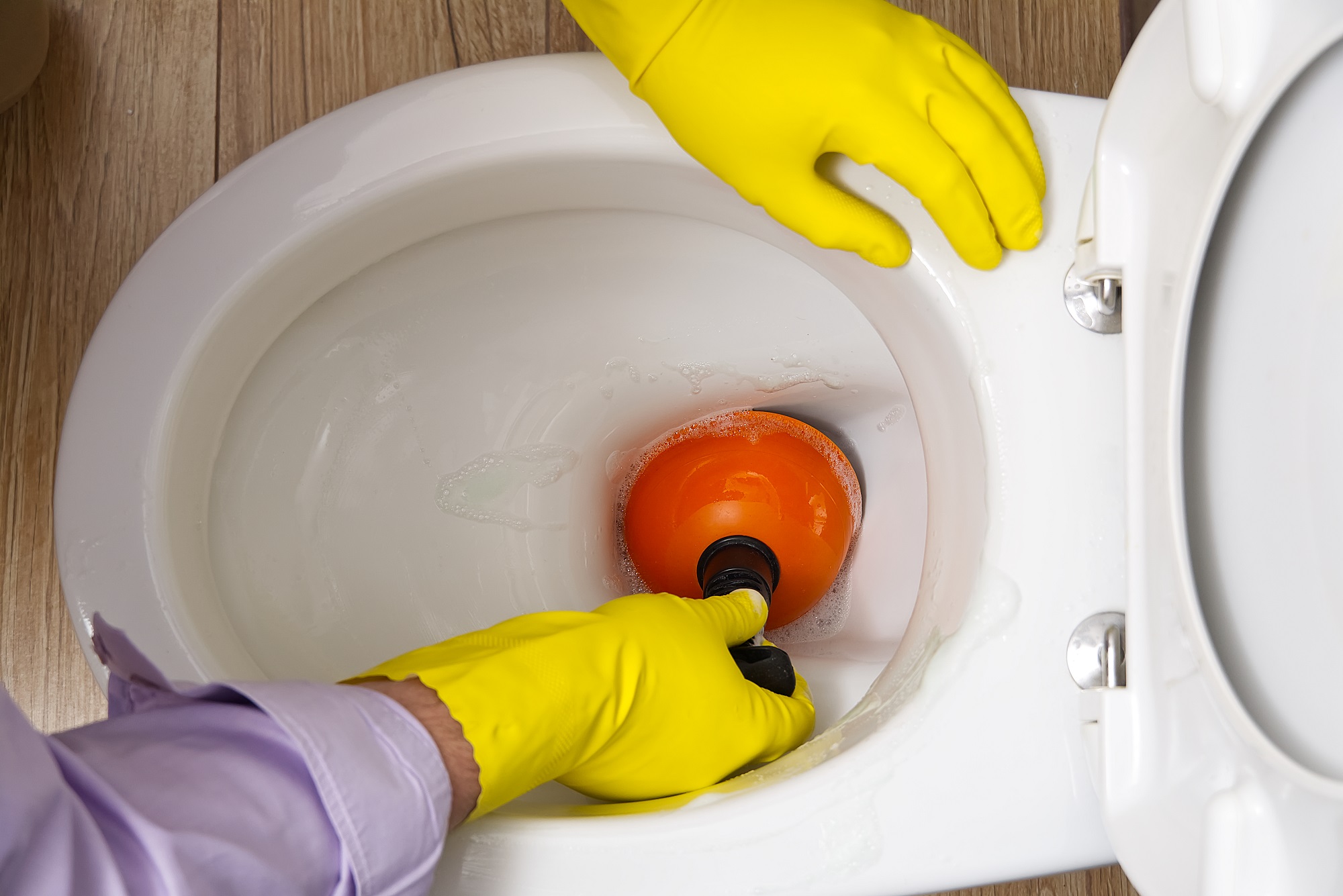Clogged toilets can be an annoyance in any household. Dealing with overflowing water and blockages is unpleasant and can lead to costly repairs. However, with simple preventative measures and mindful habits, you can significantly reduce the likelihood of encountering a clogged toilet. We will provide valuable tips and strategies to help you prevent toilet clogs and maintain a smoothly functioning bathroom. By implementing these proactive measures and contacting your local, reliable plumber for regular inspections or major clog problems, you can save yourself from the hassle and potential expenses associated with clogged toilets.
Do Not Overuse Toilet Paper
While there may not be a noticeable issue with flushing small amounts of toilet paper, overloading your pipes with an excessive amount can lead to a clogged toilet. It’s important to keep in mind that even standard-flow toilets can only handle a certain amount of paper at once. While most adults know how much toilet paper is necessary, it’s crucial to keep an eye on the habits of young children who may not have mastered the art of flushing in moderation.
Consider the Type of Toilet Paper You Are Using
When it comes to toilet paper, it’s important to consider more than just how soft and luxurious it feels against your skin. While you may love the feeling of a super soft ultra deluxe roll, your sewage or septic system may not feel the same way. Using toilet paper that doesn’t break down easily can lead to clogs and backups, especially if you’re on a septic system. Even those on a municipal sewage line can run into problems if they use too much toilet paper. So, while it may not be the most glamorous aspect of bathroom behavior, taking a closer look at the type of toilet paper you’re using, such as choosing thinner or thicker paper, can save you from some serious plumbing headaches.
Use the Double Flush Method
When it comes to personal hygiene practices, we often overlook the simplest of tasks, such as flushing the toilet. Did you know that flushing the toilet twice could make all the difference in ensuring proper waste disposal and drainage? The first flush can rid the bowl of solid waste, while the second flush ensures that tissue paper goes down the drain smoothly. It may seem like a minor effort, but it plays a significant role in maintaining a clean and healthy environment.
Clean Your Toilet Regularly with Toilet Cleaning Specific Solutions
Regularly cleaning your toilet is an essential part of maintaining good bathroom hygiene. However, did you know that it also does wonders for the health of your plumbing? The buildup of potentially clog-causing substances can cause costly damage to your septic system. That’s why using a mild cleaner when scrubbing away any dirt or grime is important. Try using vinegar, baking soda, or mild soap to do the job effectively without harsh chemicals like bleach. Of course, you should also use toilet-specific cleaners to scrub your toilet clean.
Do Not Flush Anything Except Toilet Paper
We rely on our toilets to efficiently flush away waste and toilet paper. However, too often, we treat our porcelain thrones as makeshift trash cans, clogging the pipes and causing headaches for plumbers. It’s important to remember that a toilet’s purpose is not to dispose of all items we deem disposable. Common culprits include:
- Q-tips
- Cotton balls
- Tampons and tampon applicators/pads
- Baby wipes
- Diapers
- Pills
- Oils and greases
- Hard objects
- Things that won’t dissolve
Do Not Use Chemical Drain Cleaners on a Clogged Toilet
Many people reach for the closest bottle of chemical drain cleaner when they have a clogged toilet. However, before you do, consider the potential risks. While some plumbers may recommend these products, there is a reason why others strongly advise against them. Not only are they harmful to your health, but they can also cause damage to your home’s fixtures and pipes. Plus, their impact on water systems is a cause for concern. To make matters worse, using these products can even disrupt the delicate balance of bacteria in septic systems. Instead of taking the risk, consider alternative options for unclogging your toilet that don’t threaten your health or home.
Keep the Lid Closed
Imagine this scenario: you wake up groggy and disoriented and head to the bathroom for your morning routine. You reach for the flusher and notice that the water level is higher than usual. Panic sets in as you realize that your toilet is on the verge of overflowing. What could have caused this? Sometimes, the clog comes from something falling into the toilet without your knowledge. It could be as innocent as a rogue cotton ball or a wad of toilet paper. Maybe something fell off the sink and down the drain of the toilet. Maybe one of your kids accidentally dropped a toy in there. Foreign objects like this can cause serious clogs, but don’t worry – there’s a simple solution. Keeping the lid closed when your toilet is not in use is the best way to prevent these accidental objects from creating chaos in your plumbing system.
Do Not Put Anything into Your Toilet’s Tank
Water conservation is an important issue, and using less water with every flush is a great way to reduce your environmental impact. However, if you were thinking of using an old trick to save water by putting a brick into your toilet tank, think again. This may have been common practice in the past, but modern toilets are already designed to use less water, and adding a brick can prevent them from flushing properly, leading to unwanted clogs. Moreover, even if you have an older toilet, a brick can break down over time and create plumbing issues.
Use the Correct Type of Plunger Properly When Needed

It is important that you use the toilet plumber the right way:
- If your toilet is backed up, first allow the water level to drop for 10 minutes and then close the valve behind the toilet by turning the handle clockwise.
- Next, examine the water level in the toilet bowl to determine if it is too full or almost empty. Add water using a bucket if the water line is below halfway filled or transfer water to an empty bucket if the water is filled to the brim. Use a flange-style plunger for optimal suction and submerge it in the water, ensuring the plunger covers the drain entirely.
- Finally, push and pull on the plunger handle with quick thrusts for about 20 seconds. If the problem persists, don’t hesitate to call a plumbing expert.
Call John’s Plumbing & Pumps for Tough Toilet Clogs

When it comes to our home’s plumbing system, it’s easy to feel overwhelmed and unsure of what to do in the face of a problem. From backed-up toilets to major pipe bursts, it’s always better to err on the side of caution and enlist the help of a licensed plumber. John’s Plumbing & Pumps, Inc is a trusted name in the Parkland area, with over 60 years of experience and an expert team of knowledgeable technicians ready to tackle any job. Whether you’re dealing with a minor issue or a major plumbing emergency, our team of plumbers is equipped to handle it all.
Don’t risk making matters worse by attempting a DIY fix. Call John’s Plumbing & Pumps, Inc for excellent customer experience and peace of mind.
Plumbing services we provide:
- Water Heater Repairs and Replacement
- Drain Cleaning Services with Hydro Jetting for Clogged Drains
- Residential and Commercial Plumbing Services
- Water Filtration Systems
- Leak Repair and Inspection
- Leaky Faucet Repair
- Emergency Services
- Video Inspections of Sewer Lines
- Hot Water Heater Replacements and Repairs (Electric Water Heaters, Gas Water Heaters, Tankless Heaters, etc.)
Visit our Testimonials page to see what our happy customers say about us!

